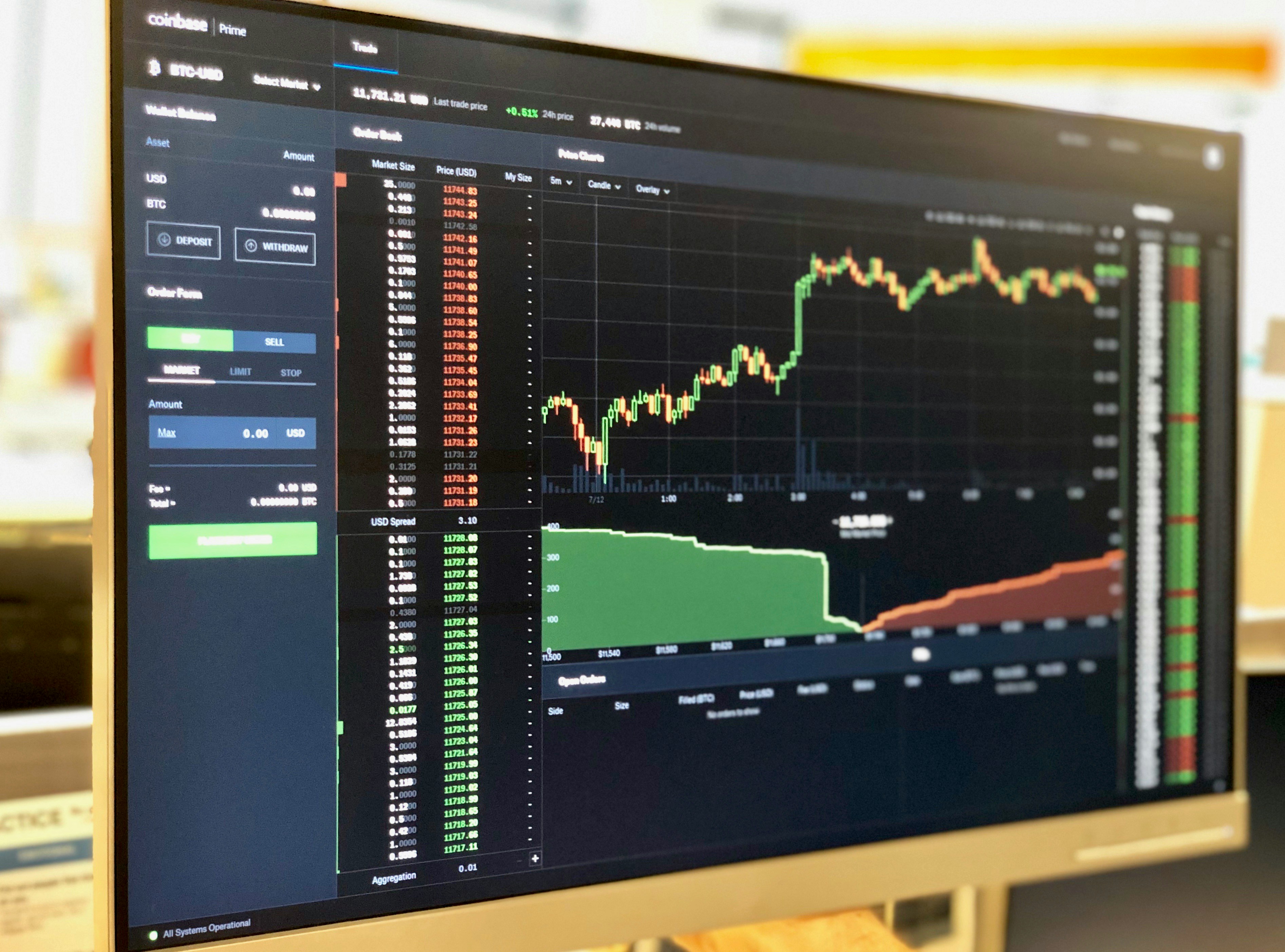
Introduction to Ethereum
Ethereum is a decentralized blockchain platform that enables developers to create and deploy smart contracts and decentralized applications (dApps). Launched in July 2015 by Vitalik Buterin, Ethereum has played a pivotal role in the evolution of the cryptocurrency landscape. Unlike Bitcoin, which primarily serves as a digital currency, Ethereum’s purpose extends beyond mere transactions, providing a flexible platform where programmable contracts can run automatically when certain conditions are met.
The underlying technology of Ethereum is its blockchain, which acts as a distributed ledger maintaining transparency and security. Ethereum introduced the concept of “smart contracts,” self-executing contracts with the terms of the agreement directly written into code. This innovation has allowed for the development of a wide range of applications in various sectors, including finance, gaming, supply chain, and more. The vitality of Ethereum in the market hinges on its ability to foster innovation and facilitate the creation of new solutions that are not possible on traditional platforms.
Additionally, the Ethereum network supports a vibrant ecosystem of tokens, particularly through the ERC-20 standard, enabling users to create their own cryptocurrencies for diverse uses. This flexibility has spurred the growth of initial coin offerings (ICOs) and decentralized finance (DeFi) projects, further solidifying Ethereum’s position as a frontrunner in the blockchain space.
As we move toward our focus on ethereum price prediction and analysis for April 27, 2025, understanding the fundamental aspects of this platform is crucial. Factors such as technological advancements, network upgrades, and changes in market dynamics will influence Ethereum’s value and its trajectory in the coming years. This foundation sets the stage for a comprehensive examination of potential price movements and trends within the Ethereum ecosystem.
Current State of the Crypto Market
As of early 2025, the cryptocurrency market has experienced significant volatility, a characteristic that is inherent to digital assets. While major cryptocurrencies, including Bitcoin and Ethereum, have garnered considerable attention, their prices have undergone dramatic fluctuations due to a variety of factors. The first quarter of 2025 has seen a resurgence in the interest towards crypto investments, coupled with renewed regulatory discussions in several countries.
Bitcoin, often regarded as the pioneer of the cryptocurrency market, has been at the forefront of discussions regarding price movements. It has experienced both upward surges and corrections, impacting the overall market sentiment. Ethereum, being the second-largest cryptocurrency, has similarly followed Bitcoin’s trajectory to an extent while also navigating its unique challenges. The performance of Ethereum is closely linked to its network developments, such as the transition to Ethereum 2.0, which aims to enhance scalability and transaction speed.
Market trends are further influenced by external economic conditions. Global inflation rates, interest rate adjustments by central banks, and geopolitical events play a crucial role in shaping investor behavior in the crypto space. Furthermore, the ongoing integration of cryptocurrencies into mainstream financial systems, coupled with advancements in blockchain technology, has elevated discussions among investors regarding long-term potential and risks associated with digital assets.
The rise of decentralized finance (DeFi) and non-fungible tokens (NFTs) has also contributed to market dynamics by diversifying the use cases of Ethereum and other cryptocurrencies. As the landscape continues to evolve, analysts are closely monitoring these developments to formulate more accurate Ethereum price predictions. Consequently, understanding the current state of the crypto market, along with the performance indicators of Bitcoin and Ethereum, sets a foundational context for better grasping the forthcoming price predictions and analyses for Ethereum on April 27, 2025.
Ethereum’s Historical Price Trends
In recent years, Ethereum has displayed a dynamic price trajectory, influenced by various factors encompassing technological upgrades, market sentiment shifts, and broader economic conditions. Since its inception, Ethereum has established itself as a foremost cryptocurrency, often regarded for its smart contract functionality and emerging decentralized applications. The price trends over the years have been characterized by notable peaks and troughs, reflective of both internal developments within the Ethereum network and external market influences.
A pivotal moment in Ethereum’s history occurred with the rollout of Ethereum 2.0, a significant upgrade aimed at enhancing the network’s scalability and security. This transition from a proof-of-work to a proof-of-stake consensus mechanism not only improved transaction speeds but also generated increased investor interest, thus positively impacting the ethereum price prediction for subsequent years. Following the announcement of these upgrades, Ethereum experienced substantial price rallies, showcasing how essential technological improvements can enhance market confidence.
<pmoreover, adoption,="" and="" as="" by="" conversely,="" corrections="" correlated="" coverage="" crackdowns="" cryptocurrency="" developments,="" downturns,="" driven="" during="" economic="" endorsements="" ethereum="" ethereum's="" events="" experiencing="" favorable="" financial="" fluctuations="" for="" frequently="" from="" has="" have="" in="" increases.="" instance,="" institutional="" institutions,="" is="" large="" macroeconomic="" market="" movements.="" news="" noteworthy="" notoriously="" of="" often="" or="" p="" periods="" phases="" positive="" price="" price.As we look towards future evaluations of the ethereum price prediction and analysis for April 27, 2025, understanding these historical trends and the catalysts behind them will be vital in assessing the potential directions Ethereum may take. The interplay of technological advancements and external market factors will undoubtedly continue to shape its path in the ever-evolving landscape of cryptocurrencies.
Factors Influencing Ethereum’s Price in 2025
As the date of April 27, 2025, approaches, various elements will significantly impact Ethereum’s price dynamics. Understanding these factors is crucial for investors and stakeholders alike who wish to engage with the cryptocurrency market effectively. This section will elaborate on the key influences that may shape Ethereum’s market trajectory, including technological advancements, regulatory frameworks, adoption rates, and competitive pressures from other cryptocurrencies.
One of the most critical factors is technological development. Ethereum’s ongoing transition to Ethereum 2.0, which aims to improve scalability, enhance security, and reduce energy consumption, is pivotal. The successful implementation of these upgrades can lead to increased investor confidence and, consequently, positively affect the ethereum price prediction and analysis for April 27, 2025. If the upgrades are well-received and operational, this may draw more developers and businesses to build on the Ethereum network, boosting demand and price.
Regulatory considerations also play a crucial role in determining the cryptocurrency’s market performance. As governments refine their stance on cryptocurrencies, any new regulations or policies that favor or discourage Ethereum usage will undoubtedly affect pricing. A favorable regulatory environment could enhance institutional investment, thereby impacting the ethereum price prediction positively.
Another significant factor is the adoption rate among both individual and institutional users. As acceptance of Ethereum in various sectors such as finance, supply chain, and digital identity grows, the network will likely experience increased utility, contributing to a bullish sentiment. Lastly, competition from other cryptocurrencies cannot be overlooked. New and existing altcoins vying for market share can influence investor behavior and market trends, thereby affecting Ethereum’s relative market position and prices leading up to April 27, 2025.
Technical Analysis of Ethereum
As we approach April 27, 2025, the technical analysis of Ethereum’s price becomes increasingly relevant for investors and traders looking to gauge potential market movements. Understanding the historical price patterns and key indicators can provide significant insights into future price actions. A comprehensive analysis primarily involves examining moving averages, the Relative Strength Index (RSI), and established support and resistance levels on the charts.
Moving averages serve as an essential tool in identifying trends and smoothing out price fluctuations. The 50-day and 200-day moving averages are particularly useful, as they help distinguish between short-term and long-term trends. A bullish crossover occurs when the shorter moving average crosses above the longer one, indicating potential upward momentum for Ethereum, while a bearish crossover suggests declining strength. Analyzing these trends leading up to April 27, 2025, can provide a clearer picture of investor sentiment and possible price trajectories.
The RSI is another critical indicator, which functions on a scale from 0 to 100, measuring the speed and change of price movements. An RSI above 70 typically indicates that Ethereum is overbought, suggesting a potential price correction, while an RSI below 30 may imply that the asset is oversold, hinting at a prospective rebound. Monitoring these fluctuations leading into the assessed date can yield substantial insights into market dynamics.
Additionally, identifying key support and resistance levels plays a vital role in Ethereum price prediction and analysis for April 27, 2025. Support levels act as price floors, where demand is strong enough to prevent the price from falling further. Conversely, resistance levels indicate points where selling interest is robust, hindering price increases. Historical data reveals these levels, providing traders and investors with critical decision-making frameworks when analyzing Ethereum’s potential movement as the date approaches.
Expert Opinions and Predictions
The landscape of cryptocurrency is ever-evolving, with experts constantly analyzing various factors that influence market dynamics. When it comes to Ethereum, predictions for the price on April 27, 2025, vary significantly among analysts, reflecting differing perspectives on the future of the platform and broader market conditions.
Some bullish analysts argue that Ethereum’s ongoing development, including upgrades to its blockchain and increasing adoption of decentralized finance (DeFi) applications, will drive demand and push the price higher. They anticipate that Ethereum may surpass previous all-time highs, driven by enhanced scalability and reduced transaction fees following the Ethereum 2.0 transition. These experts foresee a price range for Ethereum going as high as $10,000 by April 2025 due to increasing institutional investments and a bullish sentiment within the cryptocurrency community.
On the other hand, bearish predictions suggest potential hurdles that could thwart Ethereum’s upward momentum. Some analysts express concerns regarding regulatory challenges and competition from emerging blockchain technologies. They anticipate that these factors could lead to price corrections, citing a possible decline or stagnation around the $3,000 mark. Their rationale highlights the importance of market sentiment and external economic factors that could adversely impact investor confidence.
In addition to these varying outlooks, many analysts emphasize the unpredictable nature of cryptocurrency markets and encourage investors to approach with caution. They recommend diversifying portfolios and considering other market indicators beyond Ethereum price prediction. By synthesizing these expert opinions, readers can better understand the potential trajectories for Ethereum leading up to April 27, 2025, and develop their own investment strategies accordingly. Whether bullish or bearish, it is crucial to stay informed about the various influences on Ethereum’s market behavior.
Potential Risks and Challenges
As the date of April 27, 2025 approaches, stakeholders in the Ethereum ecosystem must remain vigilant to potential risks and challenges that may significantly impact the Ethereum price prediction and analysis. Understanding these dynamics is crucial for anyone considering investments or involvement in Ethereum.
Firstly, regulatory crackdowns pose a significant risk that could influence the overall market sentiment and Ethereum’s market value. Governments worldwide are continuously assessing and adjusting cryptocurrency regulations, which may lead to restrictions that could stifle innovation or impose heavy penalties on non-compliance. Any unfavorable regulatory developments could lead to a swift decline in investor confidence, which could adversely affect the Ethereum price.
Security vulnerabilities represent another pressing challenge. Although Ethereum has implemented various security measures, no platform is entirely immune to attacks. Breaches or hacking incidents can severely impact investor trust and lead to significant financial losses for users. Any high-profile security issue could prompt negative sentiment and hamper Ethereum’s growth, thereby complicating the price prediction for April 27, 2025.
Additionally, the inherent volatility of cryptocurrency markets can contribute to unforeseen fluctuations in Ethereum’s price. Various external factors, such as macroeconomic changes, geopolitical tensions, or shifts in market demand for digital assets, can all lead to significant price swings. Investors must prepare for potential storms that can alter the trajectory of Ethereum’s value.
Technological setbacks are also a concern. While Ethereum continuously evolves, issues with software updates or network efficiency could disrupt operations and deter developers and users from participating in its ecosystem. Such problems may lead to a decline in use cases for Ethereum, ultimately affecting its price forecast.
In summary, while the potential for growth in Ethereum is substantial, various risks, from regulations to technological challenges, need to be carefully monitored to arrive at a comprehensive Ethereum price prediction and analysis for April 27, 2025.
Comparison with Competitors
As the cryptocurrency market evolves, Ethereum remains a significant player alongside its main competitors, namely Binance Smart Chain, Cardano, and Solana. Each of these platforms possesses unique features and capabilities that influence their potential price movements and market positions. Analyzing their strengths and weaknesses provides valuable insight into the larger cryptocurrency landscape and Ethereum’s role within it.
Starting with Binance Smart Chain (BSC), this platform has gained considerable traction due to its low transaction fees and high throughput. BSC’s ability to facilitate decentralized finance (DeFi) applications rapidly has drawn many users, thereby presenting a challenge to Ethereum’s dominance. However, Ethereum’s established infrastructure and robust developer community continue to be significant advantages, particularly in terms of security and network effects. This could suggest a favorable long-term ethereum price prediction despite immediate competitive pressures from BSC.
Moving on to Cardano, its focus on academic research and a unique proof-of-stake consensus mechanism position it as a strong competitor. While Cardano’s ongoing development might slow its immediate growth relative to Ethereum, its eco-friendly approach and scalability features could attract users concerned about sustainability. The evolving functionalities in Cardano may impact Ethereum’s future price trajectory, especially if it successfully captures a share of the market eager for efficient blockchain solutions.
Finally, Solana is hailed for its exceptionally fast transaction speeds and lower fees, which cater to DeFi and NFT projects. This can lead to quicker adoption rates among developers. Yet, the lack of a well-tested ecosystem compared to Ethereum raises concerns regarding Solana’s security and reliability. Solana’s growth could influence ethereum price prediction and analysis for April 27, 2025, as it seeks to carve out a competitive niche within the broader market.
In conclusion, while Ethereum faces stiff competition from Binance Smart Chain, Cardano, and Solana, its foundational strengths, and network effects may still position it favorably in the long run. As such, the evolving dynamics among these competitors will undeniably impact Ethereum’s price trajectory moving forward.
Conclusion and Future Outlook
As we assess the current landscape of Ethereum, it’s essential to synthesize the insights gathered throughout this discourse on the Ethereum price prediction and analysis for April 27, 2025. The volatility inherent within the cryptocurrency market necessitates a cautious yet optimistic approach when forecasting future price movements. The potential for significant price appreciation remains, driven by the surge in decentralized finance (DeFi) applications, increasing institutional adoption, and ongoing upgrades to the Ethereum network such as the transition to Ethereum 2.0.
The insights gleaned from historical price trends, market behavior, and the overall macroeconomic climate suggest that Ethereum may demonstrate resilience and growth as it confronts challenges and embraces opportunities. Additionally, the developments within the Ethereum ecosystem, including new technological integrations and solutions designed to address scalability and interoperability, are crucial factors that could influence its price trajectory going forward. The ability of the network to adapt to user needs also plays a pivotal role in its long-term success.
It is important for investors and enthusiasts alike to remain vigilant about external factors that could sway market dynamics. Regulatory changes, competing blockchain technologies, and macroeconomic shifts may pose challenges, yet they may also serve as catalysts for innovation and improved adoption rates. Although making precise Ethereum price predictions can be challenging due to the inherent unpredictability of the market, the prospects for Ethereum in the coming years appear favorable.
In conclusion, while the Ethereum price prediction for April 27, 2025, establishes a benchmark, the evolving nature of its market underlines the necessity for continuous observation and analysis. As Ethereum continues to grow and adapt, it could very well lead the charge in shaping the future of digital assets.





















